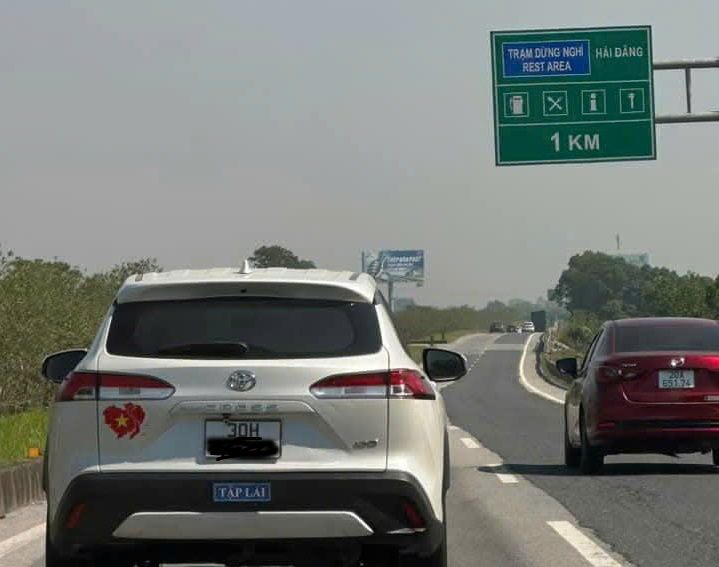On 5/9, Major General Do Thanh Binh, Director of the Traffic Police Department, said the department will collaborate with the Vietnam Road Administration to propose a dedicated training route that simulates highway driving. This approach aims to minimize disruption to other vehicles and ensure traffic order and safety.
According to the Traffic Police Department, learner drivers on highways pose significant risks, as traffic often moves at high speeds, up to 120 km/h. Novice drivers often struggle to control vehicles at this speed, while many learner vehicles travel below the minimum speed (60 km/h), violating regulations and endangering other drivers.
 |
A learner driver on the Hanoi - Thai Nguyen highway. Photo: Xuan Hoa |
A learner driver on the Hanoi - Thai Nguyen highway. Photo: Xuan Hoa
Do Minh Quan from Hanoi supports the proposal. "Some routes, like the Thai Nguyen highway, have many learner vehicles. Inexperienced drivers can easily swerve or lose control, which is very dangerous," he said.
Sharing the same view, Pham Vu, residing in Hung Yen, noted that learner vehicles often travel slowly at 60-70 km/h, frustrating many drivers. There have been instances of learner vehicles driving slowly in the left lane, posing a hazard to other vehicles.
Currently, there is no law prohibiting learner drivers from using highways. To obtain a driver's license, learners must complete a required number of kilometers, including sections on highways. To meet this requirement quickly, many instructors take their students onto highways to use the driving monitoring device (DAT).
The Traffic Police Department has recently implemented several measures to reduce highway accidents, such as a pilot program prohibiting trucks from using the lane closest to the median strip on the Hanoi - Hai Phong and Phap Van - Cau Gie highways. This measure will soon be extended to Thang Long Boulevard and the road to Noi Bai airport.
Viet An












